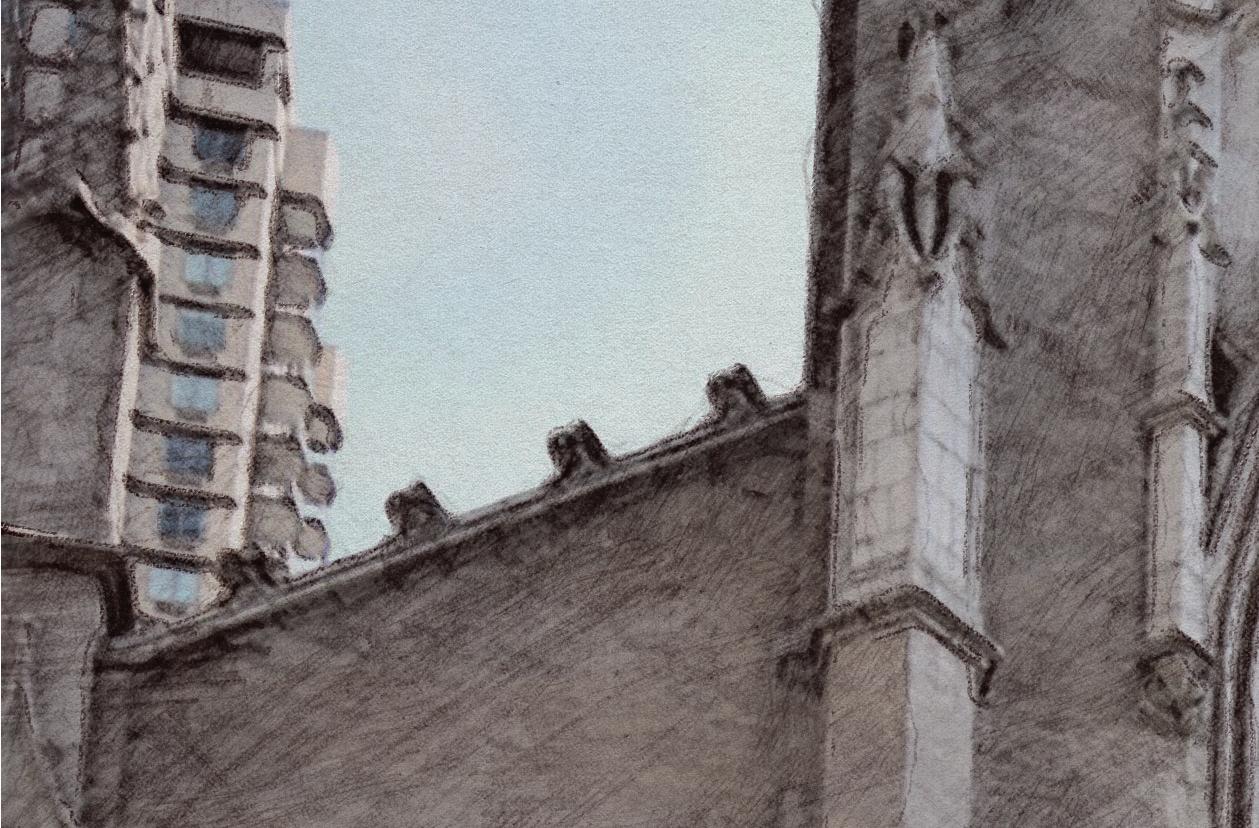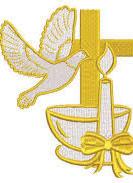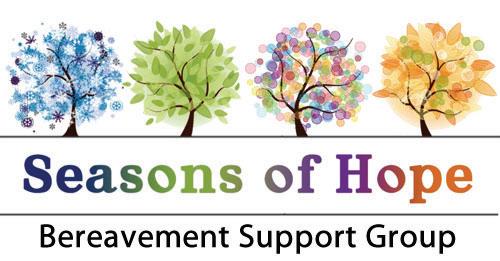Just a word

















THIRD SUNDAY OF EASTER 04/23/2023 THIRD SUNDAY OF EASTER Scan to eReader
Parish life
( Page 11) Faith Formation
6) Icon
( Page
Painting
5)
( Page
Mission Statement
The Roman Catholic Parish of St. Monica-St. Elizabeth of Hungary-St. Stephen of Hungary opens its doors to welcome and embrace all in our community. We strive through worship, hospitality and service to receive those seeking a spiritual home. In the midst of diversity of thought, life style, nationality, economic status & age, we endeavor to live as a community of faith and invite you to join our familya family seeking to know and love Jesus Christ.
Parish Staff
Pastor: Rev. Donald C. Baker ............................ frdcab@stelmo79.org
Rev. Msgr. Leslie J. Ivers ............................... msgrlivers@stelmo79.org
Weekend Associate: .................................... Rev. Anthony Ciorra, IVD
Weekend Associate:...............................................Rev. Edward Beck, CP
Pastoral Associate: Ms. Maryann Tyrer ........ mtyrer@stelmo79.org
Music Director: Mr. John Zupan .................... jzupan@stelmo79.org
Wedding Coordinator: Ms. Debbi Burdett.....dbweddingsnyc@gmail.com
Parish Manager: Jennifer DeSpirito.............................jdespirito@stelmo79.org
Plant Manager: Guillermo Vanegas .......... gvanegas@stelmo79.org
Sacristan: Pedro Pizarro ...................................ppizarro@stelmo79.org
Administrative Assistant: Gladys Tejada ..... gtejada@stelmo79.org
Church Address : 413 East 79th Street, NYC 10075
Parish Center: 406 East 80th Street, NY, NY 10075
Tel: 212-288-6250 Fax: 212- 570-1562
Email: info@stelmo79.org
Our Offices are open:
Monday & Wednesday 9am - 4pm
Tuesday - Thursday ....................................... 9am - 7pm
Friday ....................................................... Closed
Saturday ................................................. 10am - 2pm
Sunday ..................................................... Closed Closed for Lunch Weekdays..................1pm - 2pm
Mass Intentions
Saturday, April 22nd Vigil Saturday, 22nd
5:30pm Carlos Norieg a 5:30pm Carlos Noriega
Sunday, April 23rd Sunday, 23rd
T hird Sunday of Easter Third of Easter
Visit us at: www.STELMO79.org
Follow us on social media by searching STELMO79
Mass Schedule
Daily Mass: Mon-Sat, 12 noon Saturday Vigil: 5:30pm
Sunday: 8am, 10am, 12pm & 5pm
Confessions: Saturdays at 5pm or by appointment
8:00am Lucy Fer rera
8:00am Lucy Ferrera
10:00am Car mela Rug giero
10:00am Carmela Ruggiero
12:00pm All Parishioners
12:00pm All Parishioners
5pm Silvia & Luis Mosquera Silvia & Luis Mosquera
Monday, April 24th April 24th
Easter Weekday Easter
12pm T hanksgiving Thanksgiving
Tuesday, April 25th St. Mar k 25th St. Mark
12pm Priests of St. Monica’s Priests of St. Monica’s
Wednesday, April 26th 26th
Easter Weekday Easter
12pm Souls in Purg ator y Souls in Purgatory
T hur sday, April 27th Thursday, 27th
Easter Weekday Easter
12pm Corina Khan 12pm Corina Khan
Friday, April 28th Easter Weekday 28th Easter
12pm Anne Keating 12pm Anne Keating
Saturday, April 29th Saturday, 29th
St. Catherine of Siena
12pm Peter Sammut Peter Sammut
PRAYERS FOR THE SICK
Felix Carrasco, Bessie McKeanna, Rosemarie Moran, Ashley Wilson, Bruno Franco Adame, Alex Greco, Janet Gholfi, Barbara Tummolo, Uriel Cuartas, Teody Zanarias, Susan Bacerra, Michael Reilly, Dorothy Condon, Marcelle Ferrier, Joanna Jack, Cindy Garnica Castro and all those ill with or recovering from the COVID-19 virus and all Victims of Military Activities
PRAYERS FOR THE DECEASED
Andy Hernandez, Fr. Bernard Heter, Anna Napolitano, Robert Anello, Agata Torrisi, Josephine Downey, Marita Knel, Susan Lasmier, Chrissy MacDonalds & Godfrey Fantastico
Exposition of the Blessed Sacrament
Every Friday after the Noon Mass until 3pm in the church and live on-line
Devotions
Miraculous Medal on Mondays after Mass in the church and live on-line
Divine Mercy
Prayed every Friday at 3pm in the church and live on-line
Vespers (Evening Prayer)
Every Friday at 5:10pm in the Chapel and live on-line
Sacrament of Reconciliation
Saturdays at 5pm or by appointment
Anointing of the sick
Every third Saturday of the Month after the noon Mass.
Baptisms & Marriages
Please call the rectory office for more information.
Communion for the Homebound:
If you know of anyone who cannot attend church because of illness or age, and would like to have communion brought to them, please contact the Parish office, so that we can arrange for a Eucharistic Minister to bring communion to them.

Sanctuary Lamp
This Week’ Sanctuary Lamp
In Memory of Fr. Peter Colapietro
Offered by Maria Litrenta
Baptism Announcement
Today, April 23rd there will be Baptism service at the 10AM mass. At this service we will be baptizing: Florence Stelle Piscatelli

Please join us in congratulating: Timothy J. Piscatelli & Amber L. Kolodziejski on their child’s new life in Christ
Bap sm Services are open for members of the parish to join in the welcoming of our newest members
Weekly Readings & Observances
Readings for the week of April 23, 2023
Sunday: Acts 2:14, 22-33/Ps 16:1-2, 5, 7-8, 9-10, 11 (11a)/1 Pt 1:17-21/Lk 24:13-35
Monday: Acts 6:8-15/Ps 119:23-24, 26-27, 29-30/Jn 6:22-29
Tuesday: 1 Pt 5:5b-14/Ps 89:2-3, 6-7, 16-17/ Mk 16:15-20
Wednesday: Acts 8:1b-8/Ps 66:1-3a, 4-5, 6-7a/Jn 6:35-40
Thursday: Acts 8:26-40/Ps 66:8-9, 16-17, 20/Jn 6:44-51
Friday: Acts 9:1-20/Ps 117:1bc, 2/Jn 6:52-59
Saturday: Acts 9:31-42/Ps 116:12-13, 14-15, 16-17/Jn 6:60-69
Next Sunday: Acts 2:14a, 36-41/Ps 23:1-3a, 3b-4, 5, 6 (1)/1 Pt 2:20b-25/Jn 10:1-10
Observances for the week of April 23, 2023
Sunday: 3rd Sunday of Easter
Monday: St. Fidelis of Sigmaringen, Priest and Martyr
Tuesday: St. Mark, Evangelist
Wednesday: Administrative Professionals’ Day
Thursday:
Friday: St. Peter Chanel, Priest, and Martyr; St. Louis Grignion de Montfort, Priest. Arbor Day
Saturday: St. Catherine of Siena, Virgin and Doctor of the Church
Next Sunday: 4th Sunday of Easter
©LPi


Choosing the right school for your children is one of the most important gifts you can bestow on them. Email: admissions@saintstephenschool.org



• • • • •



• • • • • • • • •
Emptiness and Fullness
Hunger can mean more than a craving for food. The word can indicate a longing, yearning, or desiring. To hunger can mean to aspire or hope for something. When one hungers, there is always room for more.
Being full, on the other hand, can mean feeling uncomfortable, bloated, lethargic, drowsy, listless, heavy, passive, slothful, and slow. There is no room for more.
When it comes to sharing in the Body and Blood of Christ, the faithful should consider whether they are hungry or full. Pope John Paul II referred to the interior life when he spoke about a lack of Eucharistic hunger or thirst.

In his 1980 letter Mystery and Worship of the Most Holy Eucharist, the pope noted that all in the assembly receive Communion and was concerned whether the Eucharist is approached with the correct disposition. In making this observation, he sought to stimulate awareness of what the faithful do when they share in Christ’s Body and Blood. The Eucharist, he states in the letter, affects how a person treats others: “If our eucharist is authentic, it must make us grow in the awareness of the dignity of each person.”
That awareness of the dignity of all human beings begins with ourselves. Are you aware of your dignity? Are you aware of how God sees you? Are you aware of how much God hungers for relationship? God anticipates, craves, longs, and yearns for us. The Eucharist is an expression of God’s love that seeks to be one with us. When we partake in the sacred meal, God becomes ever more a part of us and we ever more a part of God. Through the Eucharist, we can understand that we are “oned” with God, as the mystic Julian of Norwich put it.
The Eucharist also unites us with the community of believers, an understanding that St. Augustine highlighted in his sermon to the newly initiated.
So now, if you want to understand the body of Christ, listen to the Apostle Paul speaking to the faithful: “You are the body of Christ, member for member” (1 Cor. 12.27) If you, therefore, are Christ’s body and members, it is your own mystery that is placed on the Lord’s table! It is your own mystery that you are receiving! You are saying “Amen” to what you are: your response is a personal signature, affirming your faith. When you hear “The body of Christ,” you reply “Amen.” Be a member of Christ’s body, then, so that your “Amen” may ring true!
In approaching the table of the Lord, it is important to realize what it means to say “Amen,” what it means to grow in the awareness of the dignity of each person, that our “Amen” may ring true!
59 Connecting
©
the Liturgy with Our Lives
2019 Archdiocese of Chicago: Liturgy Training Publications. 800-933-1800; www.LTP.org. Text by Kathy Kuczka.
Photo © John Zich. Permission to publish granted by the Archdiocese of Chicago on October 25, 2018.
People who are hungry for the Eucharist approach the sacrament with an openness to grow in awareness of the dignity of others.

Darumanian Winds Performing: OrchestralSuiteno2J.S.Bach Quartet#1PhilipFreihofner Gabriel’sOboeEnnuiMorricone FivesongsfromRobinHoodMiltonGranger CantinaBandJohnWilliams APRIL23,2023|3PM ST.MONICACHURCH413EAST79THST.NYNY10075 THESAINTMONICACONCERTSERIES PRESENT ANIGHTATTHEMOVIES OBOEELIZABETHKIERONSKI CLARINETKERIANNDEBARI HORNFRANCISCODONARUMA BASSOONATSUKOSATO Freeadmission Donationsgladlyaccepted Handicapaccessible www.stelmo79.org
Five Minute Jesus
Using the Gospel for Prayer – Fourth Sunday of Easter April 30, 2023
It’s simple. 1. Read the Gospel for the following Sunday slowly, reflecting on the story it tells. 2. Reflect on the questions assigned for each day. 3. Make some resolution about how what you read can be lived that day. 4. Then thank God for speaking to you through this reflection.
Gospel John 10:1-10
Jesus said: "Amen, amen, I say to you, whoever does not enter a sheepfold through the gate but climbs over elsewhere is a thief and a robber. But whoever enters through the gate is the shepherd of the sheep. The gatekeeper opens it for him, and the sheep hear his voice as the shepherd calls his own sheep by name and leads them out. When he has driven out all his own, he walks ahead of them, and the sheep follow him, because they recognize his voice. But they will not follow a stranger; they will run away from him, because they do not recognize the voice of strangers." Although Jesus used this figure of speech, the Pharisees did not realize what he was trying to tell them. So Jesus said again, "Amen, amen, I say to you, I am the gate for the sheep. All who came before me are thieves and robbers, but the sheep did not listen to them. I am the gate. Whoever enters through me will be saved, and will come in and go out and find pasture. A thief comes only to steal and slaughter and destroy; I came so that they might have life and have it more abundantly."
Monday April 24th
Was there something in this reading that spoke to me? Comforted me? Challenged me? What was it? Why did it have this effect on me?
Tuesday April 25th
We find ourselves this Sunday back during the ministry of Jesus. He speaks of the “sheepfold” - i.e. the pen where shepherds keep their sheep safe at night. All of us have safe places – places where we feel protected and cared for. Where is that place for me? And why is it my sheepfold? Who protects me there?
Wednesday April 26th
Jesus speaks of thieves and robbers who climb over the wall of the fold to get at the sheep. We begin to understand that Jesus is not talking about sheep farming, but about his community, church which at the time John was writing this Gospel was experiencing people coming into their gatherings, their “sheepfolds” and sowing division. Has this ever happened to you? Who threatens your places of safety and security? And if it is your faith that offers you your “sheepfold” what disturbs the peace and safety your faith offers you? And how do you deal with it?
Thursday April 27th
It is the shepherd who has the key to the door and his sheep follow him because “They recognize his voice”. Jesus implies that you know who belongs to Jesus’ church because they follow him. How do I follow Jesus? Do I listen for his voice? Where do I hear it? How well do I follow it?
Friday April 28th
Jesus contrasts the Shepherd with “strangers” – John informs us that Jesus is talking about the Pharisees. The Pharisees were lay religious leaders in Jesus’ day. They helped Jews follow God’s Law and live lives in faithfulness to the Covenant God made with Israel. He sees them as thieves and robbers! This reflects the relationship between the Church and their Jewish brothers and sisters at the end of the first millennium. How do you understand our relationship with our Jewish brothers and sisters today? What is your relationship? How have we moved past this animosity? Or have we?
Saturday April 29th
Jesus says that he has come so that his sheep might have life – abundantly. His words offer a picture of sheep grazing on fertile fields, safe from predators, and cared for by their shepherd. What does abundant life mean for you? Does it involve God? Faith? The Church? If so, how? If not, why not?
Just a Word
From the Pastor 04.23.23
Believing is Seeing
When I was a little boy, and my mother was doing housework, I used to sneak around and snoop. I went upstairs into the attic, where I found old clothes, my brother’s old guitar, and a fair number of new toys which each year would appear, wrapped under the Christmas tree, with tags which read, “From Santa”. I went into the basement and found old books in my father’s workshop, my brother’s chemistry set, and up on a shelf over my father’s workbench, a seashell.
The shell was too high for me to reach, but I did not need to touch it. I knew what it was, and why it was there. It was from Virginia Beach. My family used to go there back in the early 60s, before a certain incident with a purple frisbee (a story which many of you have heard by now) put an end to that. I remember the day that my father pulled a seashell from the water and showed me the pulsing creature inside it that had built the shell as a home. I was in awe. I don’t know if this was THE shell my dad showed me. But I do know that my father kept that shell until he died. It was a way of keeping the experience alive, of communing with that man and his awestruck son years before.
I’ll wager we all have such things. In fact, our lives are built around them. Diplomas, photos, wedding rings and baby booties all function in the same way. There is the object, but then the meaning of that object for us. It turns things, which in and of themselves might be of limited value, into priceless objects for us, for it connects us with experience, the event the person they symbolize.
Symbolize. Symbol is an interesting word. It is rooted in two Greek words which means, to “throw together”. The idea is that the thing is “thrown together” with the meaning of the thing, to create the “symbol” – a thing which carries a meaning beyond ng itself. It is more than a “sign”. “New York – 25 Miles” on a sign along the turnpike points you to the city but is not a part of it. A symbol, however, participates in the reality of the city itself.
Why am I going on about road signs and seashells? Because without symbols, Christianity would be impossible. Christianity expresses itself through symbols: Especially the symbols we call sacraments. A sacrament is a visible “outward sign given by Christ to impart grace” - think of the grace as the meaning, and the bread, wine, water, oil etc. as the outward sign. My father’s love for me gave that seashell its meaning. Our Father’s love for us gives the sacraments theirs.
There is another broader category of symbols which we call sacramentals. They include blessings and holy water, scapulars, rosaries, statues, and other works of religious art. They can be signs pointing to or teaching us about the faith, but also in some way, like holy water, imparting God’s grace, and blessing through their use.
One type of sacramental is an icon. Icons are a special type of religious image which grow out of the tradition of Eastern Christianity. They are painted with certain conventions, a kind of language which the viewer is invited to contemplate. Meditating upon an icon is not unlike saying the rosary for a Roman Catholic, and in many eastern churches’ icons are treated with reverence like the sacraments or even sacred scripture.
Every year we invite Fr. Peter Pearson, an Episcopalian priest and nationally recognized iconographer, to come and teach us about the preparation of an icon. In this we are not just painting a picture, but expressing our prayer in a painted image, so that it might become a symbol of our faith and devotion. The people who have participated in this weeklong class come away with their own personal creation, expressive of their faith. I would invite you to participate this year, in the first week of May.
Many people would see such images, and indeed, the sacraments, the scriptures, our Church, as relics from the past, with no meaning to them and the modern world. But for those of us with faith we see them for what they truly are: symbols, which speak to us, and invite us to remember and experience the mysteries they . . . symbolize. I still have that seashell. It still represents what it did for my father, and so much more. Allow the Church to be the same for you. It is then that we realize the truth. With all due respect to “doubting Thomas” whose story we heard in last week’s Gospel, Seeing is not believing. Believing is seeing.
Fr. Baker





























